|
Books Should Be Free Loyal Books Free Public Domain Audiobooks & eBook Downloads |
|
|
Books Should Be Free Loyal Books Free Public Domain Audiobooks & eBook Downloads |
|
Fiction |
|---|
|
Book type:
Sort by:
View by:
|
By: P. G. Wodehouse (1881-1975) | |
|---|---|
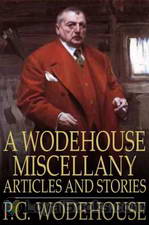 A Wodehouse Miscellany; Articles and Stories
A Wodehouse Miscellany; Articles and Stories
Sir Pelham Grenville Wodehouse was an English comic writer who enjoyed enormous popular success for more than seventy years. Best known today for the Jeeves and Blanding Castle novels and short stories, Wodehouse was also a talented playwright and lyricist who was part author and writer of fifteen plays and of 250 lyrics for some thirty musical comedies. | |
 A Damsel in Distress
A Damsel in Distress
A Damsel in Distress is a novel by P. G. Wodehouse, first published in the U.S. on October 4, 1919 by George H. Doran, New York, and in the U.K. by Herbert Jenkins, London, on October 17 1919. It had previously been serialised in The Saturday Evening Post, between May and June that year.Golf-loving American composer George Bevan falls in love with a mysterious young lady who takes refuge in his taxicab one day; when he tracks her down to a romantic rural manor, mistaken identity leads to all manner of brouhaha. | |
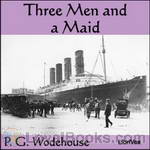 Three Men and a Maid
Three Men and a Maid
This book with two titles, Three Men and a Maid in the USA and The Girl on the Boat in the UK is a typical P.G. Wodehouse romantic comedy, involving, at various times: a disastrous talent quest, a lawyer with a revolver, a bulldog with a mind of his own and a suit of armour! The maid, or marriageable young woman, of the American title is red-haired, dog-loving Wilhelmina “Billie” Bennet. The three men are Bream Mortimer, a long-time friend and admirer of Billie, Eustace Hignett, a poet of sensitive disposition who is engaged to Billie at the opening of the tale, and Sam Marlowe, Eustace’s would-be-dashing cousin, who falls for Billie at first sight... | |
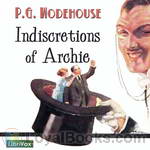 Indiscretions of Archie
Indiscretions of Archie
It wasn’t Archie’s fault really. It’s true he went to America and fell in love with Lucille, the daughter of a millionaire hotel proprietor and if he did marry her–well, what else was there to do?From his point of view, the whole thing was a thoroughly good egg; but Mr. Brewster, his father-in-law, thought differently, Archie had neither money nor occupation, which was distasteful in the eyes of the industrious Mr. Brewster; but the real bar was the fact that he had once adversely criticised one of his hotels... | |
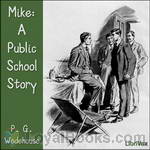 Mike: A Public School Story
Mike: A Public School Story
This novel introduces the characters Mike Jackson and Psmith, who are featured in several of Wodehouse’s later works. It shows how the two characters first met each other as teenagers at boarding school. As Psmith doesn’t appear until about halfway through this book, it was later released as two separate books, Mike at Wrykyn and Mike and Psmith. There’s lots of cricket, but you don’t need to understand the game to enjoy the antics of these public school boys as they "rag" each other and the authorities. | |
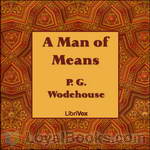 A Man of Means
A Man of Means
A Man of Means is a collection of six short stories written in collaboration by P. G. Wodehouse and C. H. Bovill. The stories all star Roland Bleke, a nondescript young man to whom financial success comes through a series of “lucky” chances, the first from a win in a sweepstake he had forgotten entering. Roland, like many a timid young man seeks love and marriage. In this pursuit his wealth is regularly a mixed blessing. The plot of each story follows its predecessor, sometimes directly, and occasionally refer back to past events in Bleke’s meteoric career... | |
 Selected Short Stories
Selected Short Stories
"A miscellaneous collection of short stories, not featuring any of Wodehouse's regular characters, most concern love and romance and, being Wodehouse, all are amusing." | |
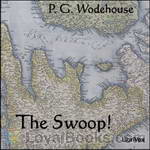 The Swoop!
The Swoop!
The Swoop! tells of the simultaneous invasion of England by several armies — “England was not merely beneath the heel of the invader. It was beneath the heels of nine invaders. There was barely standing-room.” (ch. 1) — and features references to many well-known figures of the day, among them the politician Herbert Gladstone, novelist Edgar Wallace, actor-managers Seymour Hicks and George Edwardes, and boxer Bob Fitzsimmons. | |
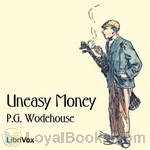 Uneasy Money
Uneasy Money
Uneasy Money is a romantic comedy by P.G. Wodehouse, published during the First World War, it offers light escapism. More romantic but only a little less humorous that his mature works, it tells of the vicissitudes of poor Lord Dawlish, who inherits five million dollars, but becomes a serially disappointed groom. When the story opens Bill (Lord Dawlish, a thoroughly pleasant man) is engaged to a demanding actress. His first thought when hearing of his massive legacy from a stranger whose tendency to slice he once cured on a West Country golf course is of the disappointed relatives... | |
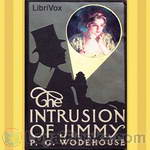 The Intrusion of Jimmy
The Intrusion of Jimmy
The action begins with playboy bachelor Jimmy Pitt in New York; having fallen in love on a transatlantic liner, he befriends a small-time burglar and breaks into a police captain's house as a result of a bet. The cast of characters head to England, and from there on it is a typically Wodehousian romantic farce, set at the stately Dreever Castle, overflowing with imposters, detectives, crooks, scheming lovers and conniving aunts. | |
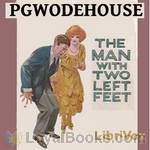 The Man With Two Left Feet, and Other Stories
The Man With Two Left Feet, and Other Stories
The Man With Two Left Feet, and Other Stories is a collection of short stories by P. G. Wodehouse, first published in the United Kingdom on March 8, 1917 by Methuen & Co., London, and in the United States in 1933 by A.L. Burt and Co., New York. All the stories had previously appeared in periodicals, usually the Strand in the UK and the Red Book magazine or the Saturday Evening Post in the US. It is a fairly miscellaneous collection — most of the stories concern relationships, sports and household... | |
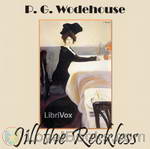 Jill the Reckless
Jill the Reckless
Jill had money, Jill was engaged to be married to Sir Derek Underhill. Suddenly Jill becomes penniless, and she is no longer engaged. With a smile, in which there is just a tinge of recklessness, she refuses to be beaten and turns to face the world. Instead she goes to New York and becomes a member of the chorus of "The Rose of America," and Mr. Wodehouse is enabled to lift the curtain of the musical comedy world. There is laughter and drama in _Jill the Reckless_, and the action never flags from the moment that Freddie Rooke confesses that he has had a hectic night, down to the point where Wally says briefly "Let 'em," which is page 313... | |
 Not George Washington
Not George Washington
It has been said that behind every successful man is a good woman. This is certainly true in the case of James Orlebar Cloyster. However, some funny things happened on his road to success. His story is humorously told from the point of view of several parties involved.According to Wikipedia, the book is a humorous, fictionalized account of Wodehouse's early years as a journalist, with Wodehouse being portrayed by the character of Cloyster. | |
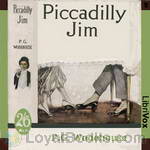 Piccadilly Jim
Piccadilly Jim
A young red-head plots to kidnap her irritating cousin with the help of a former boxer, her uncle, and a rogue who has his eye on her. Things don't work out exactly as planned, as criminals, detectives and cases of mistaken identity all get in the way. | |
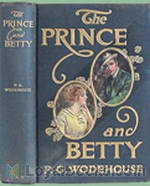 The Prince and Betty
The Prince and Betty
The Prince and Betty is a novel by P. G. Wodehouse. It was originally published in Ainslee's Magazine in the United States in January 1912, and, in a slightly different form, as a serial in Strand Magazine in the United Kingdom between February and April 1912, before being published in book form, in the UK only, by Mills & Boon, London, on 1 May that year. A substantially different version, which incorporated the plot of Psmith, Journalist, was published in the US by W. J. Watt, New York on 14 February 1912, and is the only version now widely available... | |
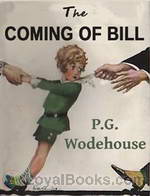 The Coming of Bill
The Coming of Bill
The Coming of Bill tells the story of Kirk Winfield, his marriage to Ruth, and their child called Bill. Bill's upbringing is threatened by the interference of Ruth's busybody writer aunt, Mrs Lora Delane Porter. | |
 Psmith, Journalist
Psmith, Journalist
Psmith takes over editing a paper while the usual editor is away on vacation. He takes on a local slum lord, and divers alarums ensue. (description by Psuke Bariah) | |
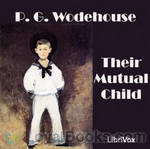 Their Mutual Child
Their Mutual Child
Their Mutual Child (aka The Coming of Bill and The White Hope) is full of the loveable characters, preposterous situations, and opportunities to chuckle, if not outright laughs, that we expect from PG Wodehouse. It lacks the frantic slapstick of some Wodehouse comedy, but has a quieter more reflective humour. Kirk, the erstwhile hero, is a typical Wodehousian hero. At the beginning of the story, he is thoroughly likeable, a healthy, but a somewhat weak and malleable fellow. He dabs at beings a painter for a living, and runs with a gang of hangers-on, who sponge off him... | |
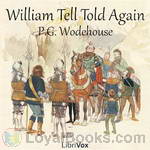 William Tell Told Again
William Tell Told Again
This is the classic story of William Tell - Swiss patriot and great apple-shooter - as seen through the eyes of English humorist P.G. Wodehouse. No Swiss were (permanently) injured in the telling of this story; however, results differed for Austrian tyrants. The original volume also included a humorous poem encapsulating the whole Tell legend, written by John W. Houghton to accompany the sixteen color illustrations. For this audiobook, the stanzas have been collected and read as a single poem. (Introduction by Mark F. Smith) | |
 The White Feather
The White Feather
Sheen, a member of Seymour's House at Wrykyn School, flees from an unexpected assault by town boys. His colleagues wade into the fight with relish, acquiring bruises and sore heads, but in the fracas, Sheen is missed, and the story makes the rounds of Wrykyn that when blows were traded, Sheen "funked it." Honor in such institutions depends on reliably standing with your House. As punishment for his defection, Sheen is "cut" - treated as if he did not exist. In a later expedition into town, Sheen is set upon by the town bullies and finds that when retreat is no option, he can take their blows and fight against odds... | |
 The Girl on the Boat
The Girl on the Boat
Also published as "Three Men and a Maid". The maid of the title is red-haired, dog-loving Wilhelmina "Billie" Bennet, and the three men are Bream Mortimer, a long-time friend and admirer of Billie, Eustace Hignett, a lily-livered poet who is engaged to Billie at the opening of the tale, and Sam Marlowe, Eustace's dashing cousin, who falls for Billie at first sight. All four find themselves on an ocean liner headed for England together, along with a capable young woman called Jane Hubbard who is smitten with Eustace, and typically Wodehousian romantic shenanigans ensue. (Introduction by wikipedia) | |
 Little Nugget
Little Nugget
Mrs Nesta Ford, in her London hotel room, reveals to her new friend Lord Mountry that she hopes to take her son Ogden on a yachting trip proposed by Mountry, despite her ex-husband having won custody of the boy. As Mountry leaves, Cynthia Drassilis arrives with Ogden, whom she has led away from his father's country house. Mrs Ford rewards Cynthia, but soon Mr Ford's secretary, a Mr Minnick, arrives to recover the stolen child. Cynthia tries to bribe his colleague, Mrs Sheridan, but to no avail, as she believes Nesta's influence has spoiled the boy... | |
 Wodehouse in the Strand - Short Story Collection
Wodehouse in the Strand - Short Story Collection
This is a collection of P.G. Wodehouse's short stories published in The Strand from 1918 to 1922. (kirk202) Sir Pelham Grenville Wodehouse, KBE (15 October 1881 – 14 February 1975) was an English humorist, whose body of work includes novels, short stories, plays, poems, song lyrics and numerous pieces of journalism. He enjoyed enormous popular success during a career that lasted more than seventy years, and his many writings continue to be widely read. | |
 Bill the Conqueror
Bill the Conqueror
Hailed as one of the funniest writers of the 20th century, P. G. Wodehouse cheerfully radiates humor that is both sophisticated and popular. In Bill the Conqueror, Wodehouse creates an array of entertaining characters who gallop around England and America in quest of love and money. Our far-from-perfect hero Bill is a dissipated American former football player and man of action, who tangles with odious relatives, bumbling gangsters, suave white-collar crooks, and even his exasperating but well-meaning friend Judson, as he seeks to become worthy of the woman of his dreams, whichever one she might be. As you might expect, the course of true love never did run smooth. | |
By: Padraic Colum (1881-1972) | |
|---|---|
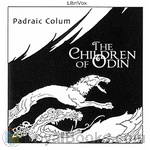 The Children of Odin
The Children of Odin
Master storyteller Padraic Colum's rich, musical voice captures all the magic and majesty of the Norse sagas in his retellings of the adventures of the gods and goddesses who lived in the Northern paradise of Asgard before the dawn of history. Here are the matchless tales of All-Father Odin, who crosses the Rainbow Bridge to walk among men in Midgard and sacrifices his right eye to drink from the Well of Wisdom; of Thor, whose mighty hammer defends Asgard; of Loki, whose mischievous cunning leads him to treachery against the gods; of giants, dragons, dwarfs and Valkyries; and of the terrible last battle that destroyed their world. | |
 The Girl Who Sat By The Ashes
The Girl Who Sat By The Ashes
"Because she used to herd Goats in the high places and the rocky places, she went by the name of Girl-go-with-the-Goats. But that was not the name that she herself called herself. She called herself Maid-alone..."So begins Padriac Colum's rendition of this classical, well-known tale. He was a master story teller, and in this short book combines vivid characters and a depth of plot with the rough-hewn simplicity the story demands. If you are fond of Cinderella stories, you will enjoy this book. And if you believe you dislike all such, it may yet win you over and change your mind. | |
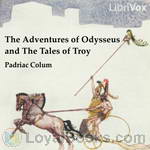 The Adventures of Odysseus and the Tale of Troy
The Adventures of Odysseus and the Tale of Troy
Also known as “The Children’s Homer,” this is Irish writer Padraic Colum’s retelling of the events of Homer’s Iliad and Odyssey for young people. Colum’s rich, evocative prose narrates the travails of Odysseus, King of Ithaca: his experiences fighting the Trojan War, and his ten years’ journey home to his faithful wife Penelope and his son Telemachus. | |
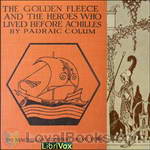 The Golden Fleece and the Heroes Who Lived Before Achilles
The Golden Fleece and the Heroes Who Lived Before Achilles
This is Irish folklorist Padraic Colum's masterful retelling of many Greek myths, focusing on Jason and the Argonauts' quest to find the Golden Fleece. He also includes the stories of Atalanta, Heracles, Perseus, Theseus, and others. | |
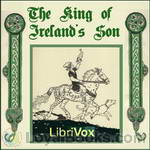 The King of Ireland's Son
The King of Ireland's Son
The King of Ireland's Son is a children's novel published in Ireland in 1916 written by Padraic Colum, and illustrated by Willy Pogany. It is the story of the eldest of the King of Ireland's sons, and his adventures winning and then finding Fedelma, the Enchanter's Daughter, who after being won is kidnapped from him by the King of the Land of Mist. It is solidly based in Irish folklore, itself being originally a folktale. (Introduction by Wikipedia) | |
By: Pansy (1841-1930) | |
|---|---|
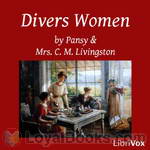 Divers Women
Divers Women
A collection of short stories, highlighting some of the best and worst characteristics we women are capable of in our Christianity and in our home life. | |
 Four Mothers at Chautauqua
Four Mothers at Chautauqua
Final book in the Chautauqua Girls series. The four original girls return to Chautauqua on the 25 year anniversary of the trip that changed their lives forever. They have with them some children that could use the lessons they themselves learned there. (Introduction by TriciaG)Music for the hymn in Chapters 9 & 26 is titled "Chautauqua" by William, F. Sherman, 1877. Music for the children's song in Chapter 19 is adapted from "Love Lifted Me" by Howard E. Smith, 1912. | |
 Mag and Margaret: A Story for Girls
Mag and Margaret: A Story for Girls
Little Mag Jessup is an orphan girl who works hard as a servant in Mrs. Perkins' boarding house to earn her keep. She has no education, except what she has picked up on her own. Her future looks unchanging until she is given, on a whim, a devotional book called "Little Pillows," in which she learns that she is valuable to God as His child. She endures trials from many fronts and the prejudice of haughty, rich Margaret, with whom she has more in common than she thinks, on her journey with God. (Introduction by TriciaG) | |
 Tip Lewis and His Lamp
Tip Lewis and His Lamp
Tip Lewis is a mischievous, unpromising scamp. One Sunday, a visiting Sunday school teacher tells his mission class how her minister had grown up in similarly bad circumstances, but had decided to follow God and had never regretted it. Tip decides to try to BE somebody, like that minister did. He is given a Bible - his lamp - to use as a guide, and from there, his life begins to change. (Introduction by TriciaG) | |
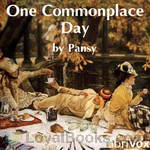 One Commonplace Day
One Commonplace Day
A temperance lecturer misses his train and ends up attending a town picnic. It was a common enough picnic on a commonplace day. But the discussions, actions, and attitudes from that picnic reverberate through the lives of many people. What are the far-reaching consequences of one commonplace day in OUR lives? | |
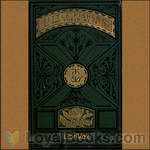 Little Fishers and Their Nets
Little Fishers and Their Nets
Thirteen year old Nettie Decker is called home after having lived with another family for 7 years, to find that her father is a drunkard and her family is in poverty and hopelessness because of it. Her stepmother has given up, and her stepbrother is headed down the same path as her father. As she struggles with the reality of her home life, she meets a friendly neighbor boy, with whom she pledges to do all she can to save her father and stepbrother. | |
 What They Couldn't: A Home Story
What They Couldn't: A Home Story
The Cameron family tries to keep up in society despite their more limited finances, by "making a dollar look to [their] friends as though it was ten dollars," much to the harried father's embarrassment and potential ruin. In addition to the financial stress, the youngest daughter has been "bringing up herself," such that she's on the road to moral peril. This story follows the life of the family as they walk the tightrope between social acceptability and financial stability, moral failure and strength through the guidance of Jesus Christ. - Summary by TriciaG | |
 Hedge Fence
Hedge Fence
Twelve stories, one for each month of the year, which first list a few Bible verses then relate how those verses took effect in a young person's life. The first 10 chapters are letters written by Frank Hudson to his cousin Renie. Frank is a boy who gets into trouble when he doesn't think before acting. He receives Bible verses as a kind of "hedge fence" he has to jump through or climb over to do the wrong things; they scratch him and give him a prick, and remind him of what is the right way to go... | |
 Christie's Christmas
Christie's Christmas
Now that the railroad has come through, Christie Tucker's parents have decided to save enough for her to go to her well-to-do Uncle Daniel for a one-day visit, on Christmas, which is also Christie's birthday. It's her first trip away from home -- and on the cars! Of course, the trip doesn't turn out exactly as expected. That one day, and how Christie lived it, has consequences that keep coming! Addressed by the author to girls, it is still a pleasant story for adults, too. | |
 Mrs. Solomon Smith Looking On
Mrs. Solomon Smith Looking On
Old Mrs. Solomon Smith considers herself "nothing but an ignorant old woman" who didn't have the advantages others did when growing up. However, those around her know that she's actually full of biblical wisdom and the experience of walking with Christ through the years. She shares her wisdom -- and more importantly, Christ -- to those she meets in everyday life, in a wise and gentle manner. She touches lives wherever she goes. But can her life and example touch the heart of Laura, a young woman who loves and respects her, but doesn't seem interested in religion? | |
 Miss Dee Dunmore Bryant
Miss Dee Dunmore Bryant
The Bryant family - widowed Mrs. Bryant and her children Benjamin, Caroline , and little Daisy - is on the thin edge of poverty due to debt incurred when Mr. Bryant was alive. We follow the family, especially Ben and Daisy, as they help shoulder some of the burden. Prominent in the story are children's dolls, which are the means to some of the family's income. - Summary by TriciaG | |
 Twenty Minutes Late
Twenty Minutes Late
Sequel to Miss Dee Dunmore Bryant. Being 20 minutes late after a day out with the Kedwins and Ben and Daisy, her siblings, starts a series of events in motion that lead Caroline Bryant to Philadelphia...and to people and situations she could never have foreseen. - Summary by TriciaG | |
 Making Fate
Making Fate
A group of young adults away on a nutting expedition is delayed in a hospitable home by a sudden rainstorm. After the storm, Marjorie insists that she must get home that night, albeit late, out of respect and care for her mother. Others want to extend the fun and stay away overnight. Ralph, the driver of their wagon and unspoken beau of Marjorie, is swayed by the teasing ridicule of Estelle to refuse to take them home that night. Unknown to the party, unexpected opportunities occur at Ralph's and Estelle's homes that same night, and their delay and subsequent actions profoundly affect the course of all three of their lives. Sequel: Overruled | |
 What She Said and What She Meant, and People Who Haven't Time and Can't Afford It
What She Said and What She Meant, and People Who Haven't Time and Can't Afford It
Two short stories by Pansy. In "What She Said and What She Meant," Mrs. Marks detests gossip and avoids it as much as she can. But what she does say is vague and suggestive. It is taken, added to, and passed on by others, so that it is no longer what she meant, and threatens to ruin people's reputations and lives in the process. In "People Who Haven't Time and Can't Afford It," Mrs. Leymon is awakened to the needs of the abject poor in her town and works out how to help them. But will she find anyone able and willing to give of their time and money to help her with the scheme? | |
 Miss Priscilla Hunter, and My Daughter Susan
Miss Priscilla Hunter, and My Daughter Susan
Two shorter stories in one book. In "Miss Priscilla Hunter," the church has been carrying debt for years. It's an embarrassment, and it is hindering them from doing necessary work. They've tried to chip away at it in the past with festivals and fundraisers, but it seems like it will never go away. Miss Hunter, a poor seamstress, finally takes matters into her own hands and works to KILL that debt once and for all! In "My Daughter Susan," we tag along with Susan in what is apparently a typical day for her, seeing how she works for others and her Lord, within the context of temperance. | |
 As in a Mirror
As in a Mirror
A wealthy and successful author, John Stuart King is preparing to write his next book, which includes a homeless tramp. He has done all the research and thinks he knows what he needs to on the subject. But in a sermon he hears with a friend, the minister exhorts his flock to be kind to the homeless, as if they were Jesus himself. Taking the minister’s sermon to heart, John Stuart resolves to live the life of a tramp so he can truly understand the tramp's plight. He not only finds information for his upcoming book, but he learns life lessons about truth and integrity, and finds the truth about loving Christ from the heart. - Summary by TriciaG | |
 Pauline
Pauline
Due to a clerical error, successful attorney Charles Gordon Curtiss arrives a day late to give a lecture in a nearby town. But the literary society's loss is Curtiss' gain; he meets the charming Constance Stuart and falls in love. A year later, they marry. The very next day, however, before Curtiss can bring Constance to her new home, Constance meets a young woman named Pauline. What Pauline tells her alters the lives of all of them for years to come. - Summary by TriciaG | |
 Pocket Measure
Pocket Measure
Three young women are the central characters in this story. Callie and her husband are poor, but they are frugal, spending using God's principles, and they reserve a tenth for God's work. Eva's husband makes more than double what Callie's husband makes, but that doesn't keep them from sinking beneath a load of debt. Even worse, she feels that her husband thinks it's her fault - and she thinks it is, too. She's an inexperienced housekeeper and doesn't know where the money goes. Happy-go-lucky Jennie wants to marry a rich man, so that her married life can be filled with parties, gaiety and pretty things. Will Coleman is poor, and not a Christian, but he's SO gentlemanly and romantic... | |
 Cunning Workmen
Cunning Workmen
Miss Cora Parkhurst is an irresponsible and flighty Sunday school teacher for a group of young ladies. She has simply no time to prepare the lessons, nor any knowledge of what it means to be a sincere Christian. Mr. Robert Hammond is an earnest, dedicated Sunday school teacher for a group of young men. Mr. Hammond invites Miss Parkhurst to the weekly teachers' meeting to spur her on, only to discover how much spiritual help and encouragement she needs! Meanwhile, Miss Parkhurst's fiance, Mr. George Tracy, is ambivalent towards any religious activities that interfere with his and Cora's relationship, and despises Mr. Hammond. | |
 Grandpa's Darlings
Grandpa's Darlings
Fiction, or fact? The narrator asserts it's fact. The narrator is an author, whom her little nieces call "Auntie Belle". There's also an "Auntie Dule" , Grandpa and Grandma, Mama and Papa, and eventually an Uncle Ross . The book is made up of vignettes of the funny sayings or doings of little Minnie and little Gracie, and how these lead to Grandpa's wise lessons for both the little ones and the adults. - Summary by TriciaG | |
 David Ransom's Watch
David Ransom's Watch
A tale of human choices and lost opportunities, and how one's choices affect so many other lives, for good or ill. A borrowed watch. A selfish younger brother. An engagement and flirtation. A trip to the city to replace the watch turns David Ransom's life in a whole new direction. - Summary by TriciaG | |
 Stephen Mitchell's Journey
Stephen Mitchell's Journey
Stephen Mitchell is a young man without a place in the world. He hates farming, although he works endless hours on the poor family farm. He isn't qualified for many jobs in town since he's had very little formal schooling. And he is a loner because he’s too self-conscious and awkward to speak to other boys his age, let alone a young lady. But Providence puts Stephen in the middle of a lecture at the Chautauqua camp meeting. For the first time in his life, Stephen is inspired to take one small step toward improving himself. And that single small step soon begets another. - Summary by TriciaG | |
 Wanted
Wanted
Twenty-seven year old Rebecca Meredith feels out of place and unwanted. She has lost her mother, brother, and idolized little sister to the grave. Her beau suddenly and without warning marries someone else. And her father has brought home a new wife. The new Mrs. Meredith tries to befriend Rebecca, but Rebecca feels pushed out. She moves to another city and tries to earn her own way, finding her way into the McKenzie house as the nurse-girl to the baby of the family, who reminds her so much of her own late sister... | |
By: Pansy aka Isabella Alden (1841-1930) | |
|---|---|
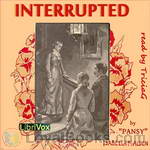 Interrupted
Interrupted
Alternately titled Out in the World. Claire Benedict is a capable, responsible, solid young Christian woman. Everyone leans on her for support and depends on her to do much that needs to be done in her church and social circle. But then her businessman father dies unexpectedly and leaves the family almost penniless, interrupting her tranquil, fulfilling life. Written by Isabella Alden under the pen name Pansy. | |
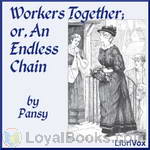 Workers Together, or, An Endless Chain
Workers Together, or, An Endless Chain
Sixth in the Chautauqua Girls series. It picks up the characters of Dr. Stuart Everett and Joy Saunders introduced in "Ester Ried Yet Speaking" and follows them and other Christians in their work for the Master. Half-hearted and fully committed workers: all have an impact on those around them, for good or for ill. | |
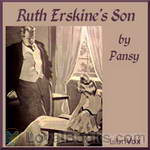 Ruth Erskine's Son
Ruth Erskine's Son
Seventh book in the Chautauqua Girls series. Written by Isabella Alden under the pseudonym “Pansy.”Erskine, Ruth's son (a 5-year-old at the end of Judge Burnham’s Daughters) is now a grown man, and Ruth is 50-something. He brings home an American wife from Paris, a woman who seems to want to tear apart mother and son. But Irene has some big secrets to hide. | |
By: Patrick Henry (1736-1799) | |
|---|---|
 The Anti-Federalist Papers
The Anti-Federalist Papers
During the period of debate over the ratification of the Constitution, numerous independent local speeches and articles were published all across the country. Initially, many of the articles in opposition were written under pseudonyms, such as “Brutus”, “Centinel”, and “Federal Farmer”. Eventually, famous revolutionary figures such as Patrick Henry came out publicly against the Constitution. They argued that the strong national government proposed by the Federalists was a threat to the rights of individuals and that the President would become a king... | |
 Give Me Liberty or Give Me Death
Give Me Liberty or Give Me Death
This speech was given March 23, 1775, at St. John’s Church in Richmond, Virginia, and is credited with having singlehandedly convinced the Virginia House of Burgesses to pass a resolution delivering the Virginia troops to the Revolutionary War. In attendance were Thomas Jefferson and George Washington. Reportedly, the crowd, upon hearing the speech, jumped up and shouted, “To Arms! To Arms!” | |
By: Paul | |
|---|---|
 The Sheridan Road Mystery
The Sheridan Road Mystery
A shot rings out in the middle of the night in a quiet Chicago neighborhood. Patrolman Murphy is directed to an apartment where a man says the shot came from. The apartment is locked and apparently empty. Was there a murder here? And if so, where is the victim? | |
By: Paul Creswick (1866-1947) | |
|---|---|
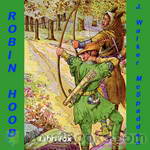 Robin Hood
Robin Hood
"Well, Robin, on what folly do you employ yourself? Do you cut sticks for our fire o' mornings?" Thus spoke Master Hugh Fitzooth, King's Ranger of the Forest at Locksley, as he entered his house.Robin flushed a little. "These are arrows, sir," he announced, holding one up for inspection.Dame Fitzooth smiled upon the boy as she rose to meet her lord. "What fortune do you bring us to-day, father?" asked she, cheerily.Fitzooth's face was a mask of discontent. "I bring myself, dame," answered he, "neither more nor less... | |
By: Paul Laurence Dunbar (1872-1906) | |
|---|---|
 The Sport of the Gods
The Sport of the Gods
The Sport of the Gods is a novel by Paul Laurence Dunbar, first published in 1902, centered around urban black life.Forced to leave the South, a family falls apart amid the harsh realities of Northern inner city life in this 1902 examination of the forces that extinguish the dreams of African Americans. | |
 Fanatics
Fanatics
This is a story about a town in Ohio during the civil war. The town is divided by ideology, but can they be united by love and respect? - Summary by Stav Nisser.Note to listeners: Because of the subject of this book, some of the ideas described and the words used can be offensive. | |
By: Paul Leicester Ford (1865-1902) | |
|---|---|
 The Great K and A Train Robbery
The Great K and A Train Robbery
In this short novel the narrator is a superintendent on the K. & A. railroad, sometime in the late nineteenth century. The train is robbed somewhere in the Arizona desert. Various adventures involve this young superintendent. Romance is provided by a comely passenger. | |
By: Pauline Elizabeth Hopkins (1859-1930) | |
|---|---|
 Contending Forces
Contending Forces
Pauline Elizabeth Hopkins, despite an impressive record of productivity and creativity as a novelist, playwright, short fiction writer, editor, actress, and singer, is an African-American woman writer who has essentially been consigned to the dustbins of American literary history. Though contemporary with Frances Ellen Watkins Harper, Charles W. Chesnutt, and Paul Laurence Dunbar, Hopkins is only now beginning to receive the kind of critical attention that Harper has enjoyed for a slightly longer period and that Chesnutt and Dunbar have always had... | |
 Hagar's Daughter. A Story of Southern Caste Prejudice
Hagar's Daughter. A Story of Southern Caste Prejudice
Hagar's Daughter was first published serially in "The Colored American Magazine" in 1901-1902 by Pauline E. Hopkins, a prominent African-American novelist, journalist, historian, and playwright. The book was described as "a powerful narrative of love and intrigue, founded on events which happened in the exciting times immediately following the assassination of President Lincoln: a story of the Republic in the power of Southern caste prejudice toward the Negro." (From the January, 1901, issue of "The... | |
By: Payne Erskine | |
|---|---|
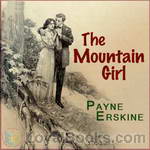 The Mountain Girl
The Mountain Girl
A delightful love-story, genuinely American in feeling and treatment. The story is stirring, the heroine is ideal. | |
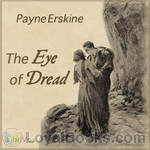 The Eye of Dread
The Eye of Dread
The Civil War is upon the United States, and the town of Leauvite has sent away its young men, among them Peter Junior and Richard Kildene. When they leave, Betty Ballard is but a child, but by the time the war has ended, she has become something else entirely. Wounded, Peter Junior finds his time at Betty's father's studio, learning to become an artist, until one day he proposes to her after deciding to go to France. Of course, she agrees to wait for him. Meanwhile, Richard, who has decided to work on the railways, expects that when he gets back, that Betty will be waiting for him. With these complications, problems begin to arise... | |
By: Perceval Landon (1868-1927) | |
|---|---|
 Two Supernatural Stories
Two Supernatural Stories
Perceval Landon was a journalist and short story author, and in these two tales he explored the supernatural. In ‘Railhead’, a man receives an urgent message – from an out-of-service telegraph. In ‘Thurnley Abbey’, the titular abbey’s past might be less remote than its occupants believe. NB These stories were first published in 1908 and contain contemporary views on race and violence. It is policy not to alter the published text. - Summary by Newgatenovelist | |
By: Percival Christopher Wren (1875-1941) | |
|---|---|
 Cupid in Africa
Cupid in Africa
Bertram Greene, brilliant student, aesthete, intellectual and shy, decides to make his military father proud of him at last and joins the colonial Indian Army Reserve as a second Lieutenant at the start of Great War. Feeling a complete fish out of water, he is dispatched to India without any training whatsoever, and is expected to take charge of a company of native soldiers. He is then posted to East Africa to join the British fighting force there, and finds out what real soldiering means. This amusing, and at times harrowing tale gives a comprehensive description of the life and conditions of a soldier in the tropics, obviously written by someone who has experienced them... | |
By: Percy Bysshe Shelley (1792-1822) | |
|---|---|
 Zastrozzi, A Romance
Zastrozzi, A Romance
“Would Julia of Strobazzo’s heart was reeking on my dagger!”From the asthmatic urgency of its opening abduction scene to the Satanic defiance of the villain’s departure “with a wild convulsive laugh of exulting revenge”, this first of Shelley’s Gothic novelettes recycles much sensational boyhood reading and also points to some of his more mature concerns.It is the ego-driven pursuit of passionate extremes, revenge included, which consigns figures like Zastrozzi and the murderous Matilda to an isolation which is socially destructive as well as self-annihilating... | |
By: Percy Fitzpatrick | |
|---|---|
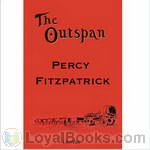 The Outspan: Tales of South Africa
The Outspan: Tales of South Africa
Six poignant short stories reminiscent of life as a transport rider in the Transvaal veld in the days of the gold rush in South Africa at the end of the 19th century. From an early age Fitzpatrick believed that life should be enjoyed to the full and his honest and often moving style of writing leaves one richer for having known him. | |
By: Percy Keese Fitzhugh (1876-1950) | |
|---|---|
 Pee Wee Harris
Pee Wee Harris
Percy Keese Fitzhugh (September 7, 1876 - July 5, 1950) was an American author of nearly 100 books for children and young adults. The bulk of his work revolves around the fictional town of Bridgeboro, New Jersey and has a scouting theme. One of his major characters was Pee-Wee Harris. The title, Pee-Wee Harris, was the first in a series of 13 Pee-Wee Harris books. Pee Wee is just that; small in stature but huge in heart and ever so loyal as a scout should be. In the first installment, Pee-Wee visits his Aunt Jamsiah and Uncle Eb in a small New Jersey backwoods village called Everdoze... | |
By: Percy Marks (1891-1956) | |
|---|---|
 The Plastic Age
The Plastic Age
The Plastic Age (1924) is a novel by Percy Marks, which tells the story of co-eds at a fictional college called Sanford. With contents that covered or implied hazing, partying, and "petting", the book sold well enough to be the second best-selling novel of 1924. The following year, it was adapted into a film of the same name, starring Clara Bow. | |
By: Peter Abelard | |
|---|---|
 The Love Letters of Abelard and Heloise
The Love Letters of Abelard and Heloise
Heloise was a strong-willed and gifted woman who was fluent in Latin, Greek and Hebrew, and came from a lower social standing than Abelard. At age 19, and living under her uncle Fulbert’s roof, Heloise fell in love with Abelard, who she was studying under. Not only did they have a clandestine affair of a sexual nature, they had a child, Astrolabe, out of wedlock. Discovered by the Fulbert (who was a Church official), Abelard was assaulted by a hired thug and castrated, and Heloise entered a convent... | |
 The Story of My Misfortunes
The Story of My Misfortunes
Autobiographies from remote historical periods can be especially fascinating. Modes of self-presentation vary greatly across the centuries, as of course does the very concept of Self. Peter Abelard, the medieval philosopher and composer, here gives a concise but vivid survey of his notoriously calamitous life. The work is couched in the form of a letter to an afflicted friend. Abelard’s abrasively competitive, often arrogant personality emerges at once in the brief Foreword, where he informs his correspondent: “(I)n comparing your sorrows with mine, you may discover that yours are in truth nought.. and so shall you come to bear them the more easily.” | |
By: Peter B. Kyne (1880-1957) | |
|---|---|
 The Valley of the Giants
The Valley of the Giants
The man was John Cardigan; in that lonely, hostile land he was the first pioneer. This is the tale of Cardigan and Cardigan’s son, for in his chosen land the pioneer leader in the gigantic task of hewing a path for civilization was to know the bliss of woman’s love and of parenthood, and the sorrow that comes of the loss of a perfect mate; he was to know the tremendous joy of accomplishment and worldly success after infinite labour; and in the sunset of life he was to know the dull despair of failure and ruin... | |
 The Go-Getter
The Go-Getter
A disabled veteran succeeds as a civilian with persistence and military focus. | |
By: Peter Christen Asbjørnsen (1812-1885) | |
|---|---|
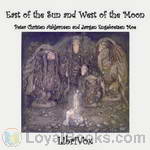 East of the Sun and West of the Moon
East of the Sun and West of the Moon
Once on a time there was a poor husbandman who had so many children that he hadn’t much of either food or clothing to give them. Pretty children they all were, but the prettiest was the youngest daughter, who was so lovely there was no end to her loveliness.So one day, ’twas on a Thursday evening late at the fall of the year, the weather was so wild and rough outside, and it was so cruelly dark, and rain fell and wind blew, till the walls of the cottage shook again. There they all sat round the fire, busy with this thing and that... | |
By: Peter H. Ditchfield | |
|---|---|
 Vanishing England
Vanishing England
VANISHING ENGLANDby P. H. DITCHFIELDINTRODUCTIONThis book is intended not to raise fears but to record facts. We wish to describe with pen and pencil those features of England which are gradually disappearing, and to preserve the memory of them. It may be said that we have begun our quest too late; that so much has already vanished that it is hardly worth while to record what is left. Although much has gone, there is still, however, much remaining that is good, that reveals the artistic skill and taste of our forefathers, and recalls the wonders of old-time... | |
By: Peter Newell (1862-1924) | |
|---|---|
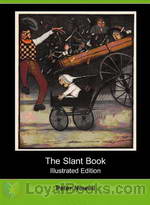 The Slant Book
The Slant Book
The Slant Book is literally the shape of a parallelogram, with the spine of the book running down one side. When opened, facing pages form a “V” shape. All the pictures on the slanted recto pages show a way-too-precocious infant in a carriage [the "go-cart" of yesteryear] racing downhill who has somehow gotten away from his nanny, gleefully creating havoc all along the way! The facing verso pages contain two stanzas of commentary on the charming –if alarming!– illustrations. This book pioneered the “special format” children’s literature of today, such as pop-up books or cutout books like Eric Carle’s The Very Hungry Caterpillar... | |
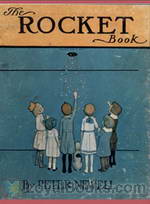 The Rocket Book
The Rocket Book
The Rocket Book begins when the son of a building superintendent sets a match to a rocket he discovered in the basement. Suddenly, the rocket blasts its way up through apartment after apartment in a high-rise, disrupting and transforming the humdrum goings-on of twenty families till it is finally stopped cold by something in the attic. An elliptical hole is punched in each of the book’s pages and illustrations to signify where the rocket passed through every apartment! As in all of Newell’s books, the verse on the verso-page provides commentary on the recto-page illustration... | |
By: Phaedrus (c. 15 BC - c. AD 50) | |
|---|---|
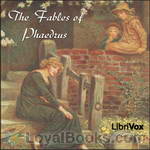 The Fables of Phaedrus
The Fables of Phaedrus
The fable is a small narrative, in prose or verse, which has as its main characteristic the aim of conveying a moral lesson (the “moral”), implicitly or, more normally, explicitly expressed. Even though the modern concept of fable is that it should have animals or inanimated objects as characters – an idea supported by the works of famous fabulists such as Aesop and La Fontaine – Phaedrus, the most important Latin fabulist, is innovative in his writing. Although many of his fables do depict animals or objects assuming speech, he also has many short stories about men, writing narratives that seem to the modern eye more like short tales than fables... | |
By: Philip Jose Farmer (b. 1918) | |
|---|---|
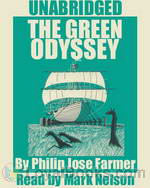 The Green Odyssey
The Green Odyssey
Alan Green is a space traveler stranded on a barbaric planet who has been taken slave and made a consort to an insipid and smelly queen. His slave-wife, though beautiful and smart, nags him constantly. He’s given up hope of ever returning to Earth when he hears of two astronauts who have been captured in a kingdom on the other side of the planet, and sets out on an action-packed journey on a ship sailing across vast grasslands on rolling pin-like wheels in a desperate scheme to save them and return home. Due to the non-renewal of its copyright, this book is in the public domain. | |
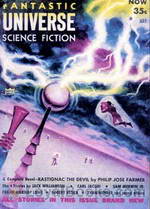 Rastignac The Devil
Rastignac The Devil
French colonists on a planet ruled by reptiles and amphibians are forced to wear living “skins” that subdue aggression and enforce vegetarianism. As children, Rastignac and his reptile friend Mapfarity force themselves to become carnivores and begin a protein fueled journey that causes Rastignac to develop a Philosophy of Violence. When a spaceship from Earth crashes in the ocean, Rastignac and company must put their philosophy to the test. - Rastignac The Devil was first published in the May 1954 issue of Fantastic Universe Magazine. | |
By: Philip K. Dick (1928-1982) | |
|---|---|
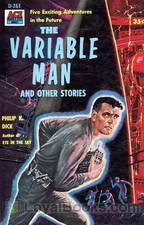 The Variable Man
The Variable Man
Predictability has come a long way. The computers of the future can tell you if you’re going to win a war before you fire a shot. Unfortunately they’re predicting perpetual standoff between the Terran and Centaurian Empires. What they need is something unpredictable, what they get is Thomas Cole, a man from the past accidently dragged forward in time. Will he fit their calculations, or is he the random variable that can break the stalemate? – The Variable Man first appeared in the September, 1953 issue of Space Science Fiction magazine. | |
 Second Variety
Second Variety
Early victories by the USSR in a global nuclear war cause the United Nations government to retreat to the moon leaving behind troops and fierce autonomous robots called “Claws”, which reproduce and redesign themselves in unmanned subterranean factories. After six bloody years of conflict the Soviets call for an urgent conference and UN Major Joseph Hendricks sets out to meet them. Along the way he will discover what the Claws have been up to, and it isn’t good… - Second Variety was first published in the May 1953 edition of Space Science Fiction Magazine. | |
 Mr. Spaceship
Mr. Spaceship
The war with the Yucks from Proxima Centauri was claimed to be a stalemate but they were really winning. The mine belts they laid seemed to propagate themselves and were slowly strangling Terran planets. How did they do that? What was their secret? The answer was baffling and the best human minds could only conclude that their ships and mines were somehow alive. So, the next desperate step was to ask "If they are using organic ships, why can't we do the same?". Thus Mr. Spaceship was conceived and carried out. But will a conscious warship do what the generals wish? Perhaps and perhaps something entirely surprising! | |
 The Crystal Crypt & Beyond the Door
The Crystal Crypt & Beyond the Door
Two early science fiction stories by the wonderful craftsman, Philip K. Dick. In the Crystal Crypt, taken from the 1954 Planet Stories, the war between Mars and Terra is about to erupt and earth has only merchants and salesmen to fight; can they carry out their mission? Beyond the Door is a story that asks and answers the question: what lives beyond the door? And is it dangerous? | |
 The Defenders
The Defenders
The terrible destruction of total nuclear war between the Western and Eastern Blocks has succeeded in sterilizing the surface of the earth. No living creature can now exist there and all humans on both sides, have fled to the hives built miles below the surface where they constantly work to produce the war materials necessary to carry on the battle. For 8 years now, the actual fighting between these super powers has been conducted by robots known as Ledeys since only they can sustain the terrible levels of radiation caused by the constant bombardment... | |
 Beyond Lies the Wub & The Skull
Beyond Lies the Wub & The Skull
Two stories in the inimitable Philip Dick style. What is a Wub? A 400 pound slovenly, fat, ungainly, drooling animal that looks like a cross between a walrus and an enormous hog? Well, yes that is pretty much what he looks like and for 50 cents, a good bargain no matter how he tastes. The hungry spaceship crew expect to find out. Of course the Wub may not entirely agree but it doesn't have much to say about it. The second story, The Skull, is a skilful mesh of time travel, unscrupulous governments, prisoners, and religion. With an assassin thrown in for good measure. Enjoy! | |
 The Eyes Have It & Tony and the Beetles
The Eyes Have It & Tony and the Beetles
Aliens have invaded the earth! Horrible one celled creatures disguised as normal human beings ! Well, at least that is what it seems to the author. Yes, The Eyes Have It is a whimsical story, making gentle fun of certain writing styles, but only a topflight science-fictionist like Philip Dick , we thought, could have written this story, in just this way. Tony and the Beetles takes place far in the future when Earth's enormous colonial empire is well established but the question is, how long can it last? 10 year old Tony grows up fast when history catches up with the human race. A sobering look at human history .. and our probable future. Two very different stories but both entertaining. | |
By: Philip Verrill Mighels (1869-1911) | |
|---|---|
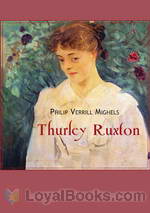 Thurley Ruxton
Thurley Ruxton
This is a rags to riches romance about an exceedingly beautiful, poor, young girl (Thurley Ruxton) who is mentored by one of New York’s elite hostesses. In order to draw them into her social circle, she allows all the famous and moneyed populous of Gothem to believe that Thurley is the princess Thurvinia hiding in New York to escape an arranged marriage. This causes all manner of high drama and romance with a suitable ending. | |
By: Philip Wylie (1902-1971) | |
|---|---|
 Gladiator
Gladiator
Gladiator by Philip Wylie is the story of a man who although normal in all other ways, through the genius of his Father a biologist attains the strength and impregnability of a superman. The problems he encounters in trying to fit into a society of normal human beings who show fear and hatred whenever they view his abnormal strength and physical ability pains him to the point of having to leave civilization. | |
By: Pieter Harting (1812-1885) | |
|---|---|
 Anno Domini 2071
Anno Domini 2071
Curious to see how the world was imagined to be 50 years from now? Harting, under the pseudonym Dr. Dioscorides, originally published his steampunk utopian novelette in 1865 under the title Anno 2065, but soon had to publish new editions because of all the changes happening at the time. We have in the catalogue the 1870 edition "Anno 2070" recorded in Dutch. This is the English translation of that edition, published in 1871, and naturally titled "Anno Domini 2071". It isn't free from racial defamation, but it does contain some radical ideas for its time, like the Suffragette movement, the Darwinian Evolution model, and many creatively imagined inventions! - Summary by Rapunzelina | |
By: Plague Ship (1912-2005) | |
|---|---|
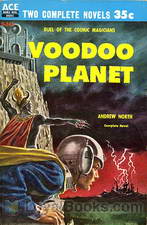 Voodoo Planet
Voodoo Planet
The sequel to Plague Ship, Voodoo Planet finds the Solar Queen banned from trade and starting her supposed quiet two-year stint as an interstellar mail carrier. But instead her crew accepts a visit to the safari planet of Khatka, where they find themselves caught in a battle between the forces of reason and the powers of Khatka’s mind-controlling wizard. | |
By: Plato (428/427 BC - 348/347 BC) | |
|---|---|
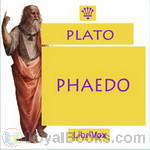 Phaedo
Phaedo
Plato's Phaedo is one of the great dialogues of his middle period, along with the Republic and the Symposium. The Phaedo, which depicts the death of Socrates, is also Plato's seventh and last dialogue to detail the philosopher's final days (the first six being Theaetetus, Euthyphro, Sophist, Statesman, Apology, and Crito).In the dialogue, Socrates discusses the nature of the afterlife on his last day before being executed by drinking hemlock. Socrates has been imprisoned and sentenced to death by an Athenian jury for not believing in the gods of the state and for corrupting the youth of the city... | |
 Apology
Apology
The Apology of Socrates is Plato's version of the speech given by Socrates as he unsuccessfully defended himself in 399 BC against the charges of "corrupting the young, and by not believing in the gods in whom the city believes, but in other daimonia that are novel" (24b). "Apology" here has its earlier meaning (now usually expressed by the word "apologia") of speaking in defense of a cause or of one's beliefs or actions (from the Ancient Greek ἀπολογία). | |
 Laws
Laws
Νόμοι (Laws) is Plato's final dialogue written after his attempt to advise the tyrant Dionysius II of Syracuse. The dialogue takes place between: an Athenian Stranger (Socrates? A god in human form?); the quiet Lacedaemonian Megillus; and the Cretan Cleinias. The Stranger asks whether humans live to be more effective at waging war or if there is something more important a legislator should seek to achieve. During their pilgrimage Cleinias discloses his role in the establishment of a new colony... | |
By: Poul Anderson (1926-2001) | |
|---|---|
 Security
Security
“Security”, tells the story of a compartmentalized government physicist ordered by secret police to complete experiments aimed at developing a new weapon. He is brought to a hidden space station and put in charge of the project but there are many questions. In a world of spies watching spies it’s sometimes hard to know what’s patriotic. -- Poul Anderson was a Golden Age Science Fiction and Fantasy author. “Security” first appeared in the magazine “Space Science Fiction” in February of 1953 | |
 The Chapter Ends
The Chapter Ends
Far, far in the future the Earth is still spinning around the Sun, on the edge of the galaxy, dozing in obscurity, forgotten by it's trillions of progeny and completely irrelevant. But this doesn't matter to the few millions who still live there in simplicity and quiet happiness. But then interstellar politics dictates that they must all leave Earth because ... well, listen to the story as told by the great Poul Anderson as he explores what the Earth means to humans and to one man in particular. | |
By: Poul William Anderson (1926-2001) | |
|---|---|
 Sentiment, Inc.
Sentiment, Inc.
The way we feel about another person, or about objects, is often bound up in associations that have no direct connection with the person or object at all. Often, what we call a "change of heart" comes about sheerly from a change in the many associations which make up our present viewpoint. Now, suppose that these associations could be altered artificially, at the option of the person who was in charge of the process.... (from the Blurb ) | |